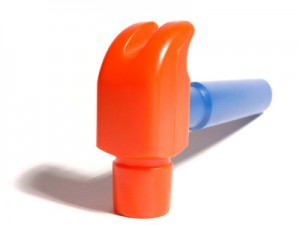 Gamification has become part of our everyday life.
Gamification has become part of our everyday life.
Your grocery store gives you points for shopping that you can redeem for gas. Starbucks gives you a free dose of caffeine as a reward for buying 10 overpriced lattes. You many not have realized it, but gamification — adding game elements to non-game situations — has been happening around us for years.
The last half-decade has seen an explosion of gamification affecting us in myriad other ways, most notably online. Foursquare’s location-based badges are the ubiquitous example. But take a look at LinkedIn; the progress bar showing the completeness of your profile encourages you to finish. In Kobo’s Reading Life, readers can earn awards based on how many books they finish and compete with friends to see who reads the fastest. All gamified experiences.
Gamification: Just a Fad?
 Is gamification the hammer you need to nail user adoption and engagement?
Is gamification the hammer you need to nail user adoption and engagement?
Gamification arguably has been one of the biggest buzzwords of late in the online marketing realm. Gartner has reported:
- By 2014, gamified services for consumer goods marketing and customer retention will become as important as Facebook, eBay or Amazon. More than 70% of Global 2000 organizations will have at least one gamified application.
- By 2015, gamification will grow to $1.6 billion, from $100 million in 2011. More than 50% of organizations that manage innovation processes will gamify those processes.
Businesses are seeing the possibilities: add a sense of fun and play to a product and people will use it — brilliant! Many regard gamification as the hammer needed to nail down instant user adoption and long-term engagement.
Not so fast — put the hammer down! As with any new trend, gamification is in danger of being over and improperly used. Tacking a leaderboard and some badges onto your online product doesn’t automatically make it fun. More importantly, nor does it guarantee business results. Certainly, incorporating game design techniques is a tool we can use to improve a product’s experience, but it needs to be done in a thoughtful way. Let’s proceed with caution.
Gamification in the User Experience
Gamification is the use of game design techniques and mechanics to solve problems and engage audiences. Basically, it’s taking elements of games and applying them to non-game situations to make them fun.
As an experience designer, my job is to design products in a way that achieve my clients’ business goals while providing experiences that their customers find satisfying (read: fun). Using game elements in the experience leverages the things people love about games to increase user engagement, build brand awareness and inspire brand loyalty.
It can work, too. Consider DevHub, an online web publishing platform. Before gamification, only 10% of DevHub’s users finished building their web sites. DevHub recognized that they had to address the engagement problems, so they decided to re-architect their product relying heavily on game mechanics. The concept for the new DevHub is that of building a virtual empire. They created cute “Devatars” and built in a points system with levels and rewards, turning the act of building a website into a game. After the re-launch, website completion increased to 80%.
A bevy of agencies has popped up that specialize in gamifying websites, apps, whatever. Some even offer automatic gamification engines which instantly suggest game elements that can be added to your website. This one-size-fits-all approach produces gamified websites, but that’s all.
Adding Game to Your Products
 Adding game elements doesn’t make a product fun. You must create a meaningful, engaging experience.
Adding game elements doesn’t make a product fun. You must create a meaningful, engaging experience.
Game design techniques are a tool Red Privet includes in our experience design toolbox. Before making the decision to gamify, consider the following questions:
Will gamifying the product add value?
This may seem obvious: don’t gamify for gamification’s sake. Do a little research first. At Red Privet, we first understand your business goals and get to know your customers’ goals, behaviors, likes and dislikes. Only once we understand how best to meet your business needs and your customers’ can we ensure that gamifying your product’s experience will add value.
What motivates your customers?
Adding game mechanics, like points and leaderboards, can speak to different human desires and motivate behaviors. However, there is more to a good game than just levels and fake money. Red Privet combines motivational design with user experience design to get to the core of what keeps customers coming back for more.
What makes a good game?
Any game has goals, rules, a feedback system and voluntary participation. Why are games like Angry Birds and Temple Run so addicting? Good games often include:
- A compelling narrative; a story that engages the players.
- An element of social interaction; be it for competition or collaboration.
- Mastery of skills from novice to expert. These experiences balance skill and challenge in a way that players are neither bored nor overly anxious about their performance.
- Rewards — Anything from a gold star to a new car to a feeling of accomplishment.
Red Privet’s focus on meaningful, engaging experiences means we can leverage these game elements in more strategic ways to produce good games, great user experiences and business results.
